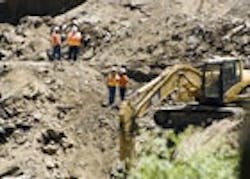California Adopts New General Storm Water Permit
The California State Water Resources Control Board has adopted a new National Pollutant Discharge Elimination System General Permit for Storm Water Discharges Associated with Construction and Land Disturbance Activities.
The new permit imposes more rigorous standards on builders and developers, and becomes effective on July 1, 2010. The new framework includes mandatory BMPs, two forms of numeric discharge limitations and monitoring requirements that could be costly for developers. The new permit may provide more opportunities for enforcement actions and citizens' lawsuits.
Under the new permit, developers and construction contractors must implement specific BMPs, achieve quantitatively-defined (i.e., numeric) pollutant-specific discharge standards and conduct much more rigorous monitoring based on the project's projected risk level. The new approach reduces developers' ability to design their own permits, will make them more accountable and could involve significantly greater expense, a Mondaq article by Robert L. Falk and Corinne Fratini reported.
The State Water Board's new quantitative standards take a two-tiered approach, depending on the risk level of the particular site.
New minimum BMPs include active treatment systems, which may be necessary where traditional erosion and sediment controls do not effectively control accelerated erosion; where site constraints inhibit the ability to construct a correctly-sized sediment basin; where clay and/or highly erosive soils are present; or where the site has very steep or long slope lengths.
The new permit also includes several post-construction requirements, stating that site designs must provide no net increase in overall site runoff and match pre-project hydrology by maintaining runoff volume and drainage concentrations. To achieve the required results where impervious surfaces such as roofs and paved surfaces are being increased, developers must implement off-setting, non-structural BMPs.
The new permit also requires electronic filing of all Permit Registration Documents, Notices of Intent, SWPPPs, annual reports, Notices of Termination and NAL/NEL Exceedance Reports. This information will be available to the Water Boards and citizen enforcers.
Source: Mondaq
